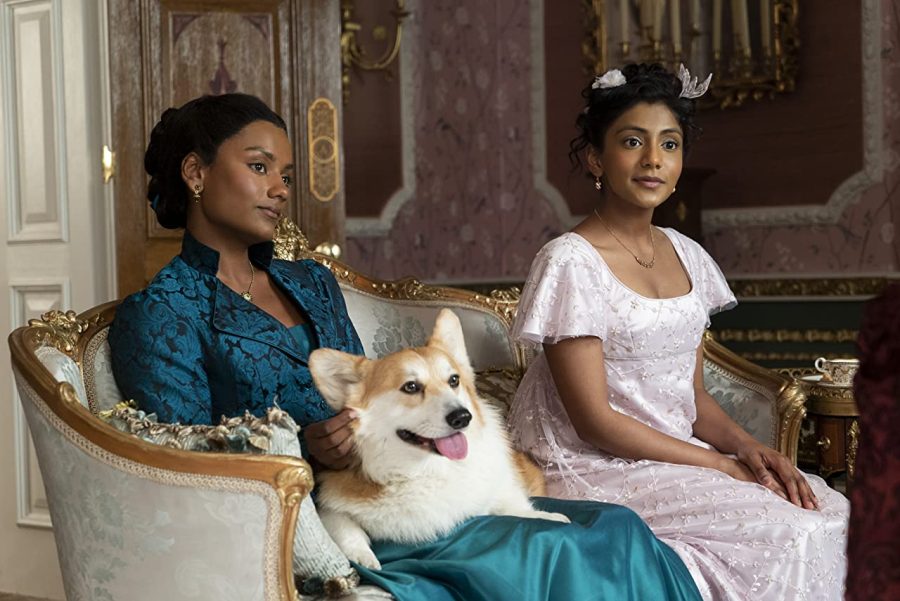DI Voices | Bridgerton season 2 embodies positive representation
Photo courtesy of Liam Daniel/Netflix/IMDB
Actresses Charithra Chandran and Simone Ashley appear the episode “Capital R Rake” of the famous Netflix show “Bridgerton.” Columnist Sanchita Teeka believes that season two of “Bridgerton” encompasses more representation and inclusivity.
Apr 15, 2022
Up until my junior year of high school, I absolutely hated myself. I wanted to be white and blonde like every other popular girl in my grade.
I hated being Indian.
If I said the media had nothing to do with my mindset, I would be lying. Growing up, the only brown or Indian characters in mainstream television were full of negative stereotypes and seen as the butt of all jokes.
For instance, Ravi from Disney Channel’s “Jessie” existed to simply perpetuate the nerdy, weird Indian kid stereotype. In adult media, Apu from “The Simpsons” is stereotyped as being cheap, and is mocked throughout the show.
With representation like this, how was it possible for a first-generation Indian girl to ever feel proud of her culture and ethnic background?
Get The Daily Illini in your inbox!
Watching season two of Bridgerton has been more emotion-evoking and impactful than I could have ever expected. Once they announced the lead actress was Simone Ashley, a British Indian actress, I was beyond ecstatic. The positive representation I had been deprived of my whole life in Western media was finally happening.
At a glance, season two doesn’t seem like it does anything particularly special, but that’s exactly what makes it such good representation. The women are shown as the most beautiful in their society, without microaggressive comments such as “she’s pretty for an Indian girl”— a comment I am no stranger to.
It was so incredibly refreshing to see Indian girls, similar to myself, portrayed without any offensive stereotypes or “justifications” of their beauty, talent or intelligence. The main characters’ desirability wasn’t once questioned or surprising, a trope too often seen in Western media.
This season even included aspects of Indian culture. Instead of making it a joke or something to be weirded out by, it was elegant and beautiful.
If the media I consumed had included such positive representation when I was younger, I would have saved so many years of hatred and embarrassment of my culture. I would have embraced my mom’s weekly hair oil massages, haldi face masks, Indian jewelry and called my mom “mummi” in front of my friends.
If I could have seen people who looked like me and who shared my culture love themselves, I might’ve loved myself too. I might’ve been able to skip the years of dousing my clothes in Bath & Body Works perfume to not smell like spices, secretly straightening my hair to look like my classmates and trying to get rid of anything that could be traced to being Indian.
Even though I’ve unlearned the hatred I had grown for my culture, this season of Bridgerton still means the world to me. Representation may seem minuscule, but just having someone who looks like you on a screen can be the difference between a kid’s love or hate for who they are.
Sanchita is a freshman in LAS.






